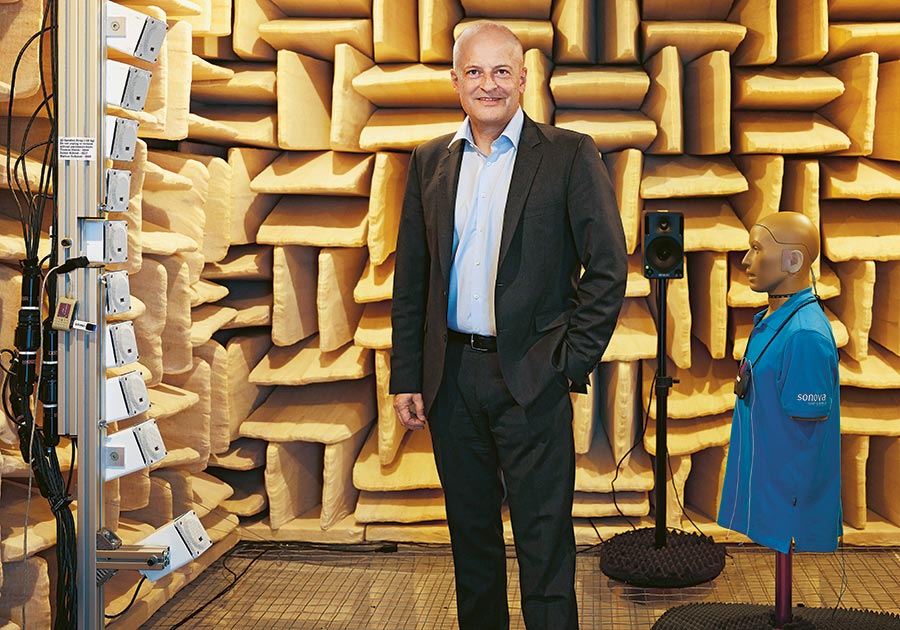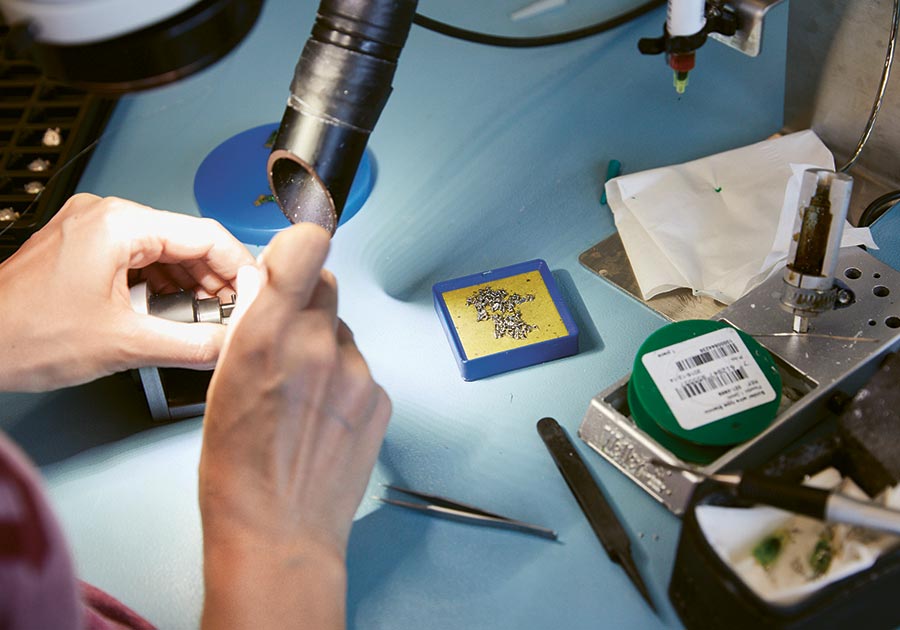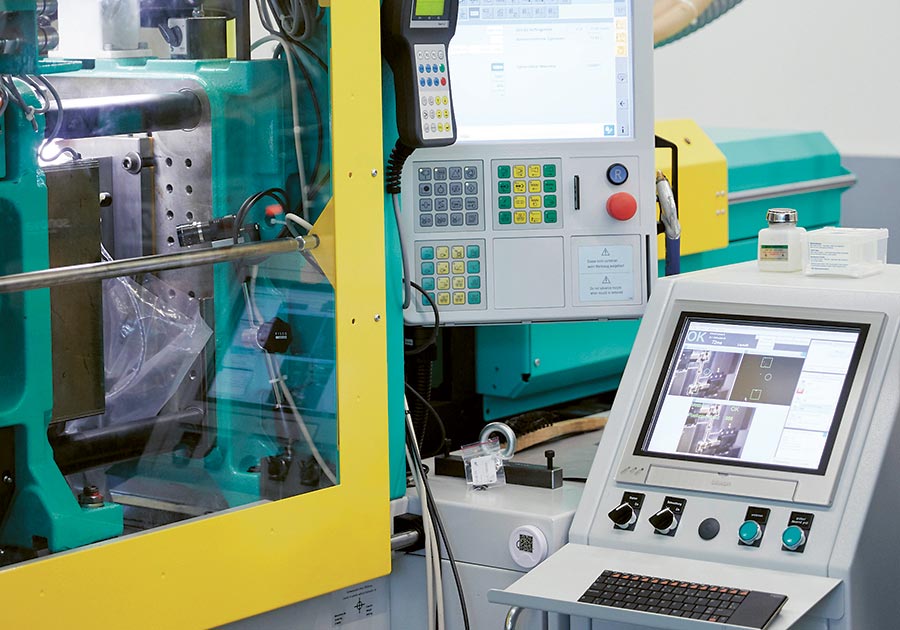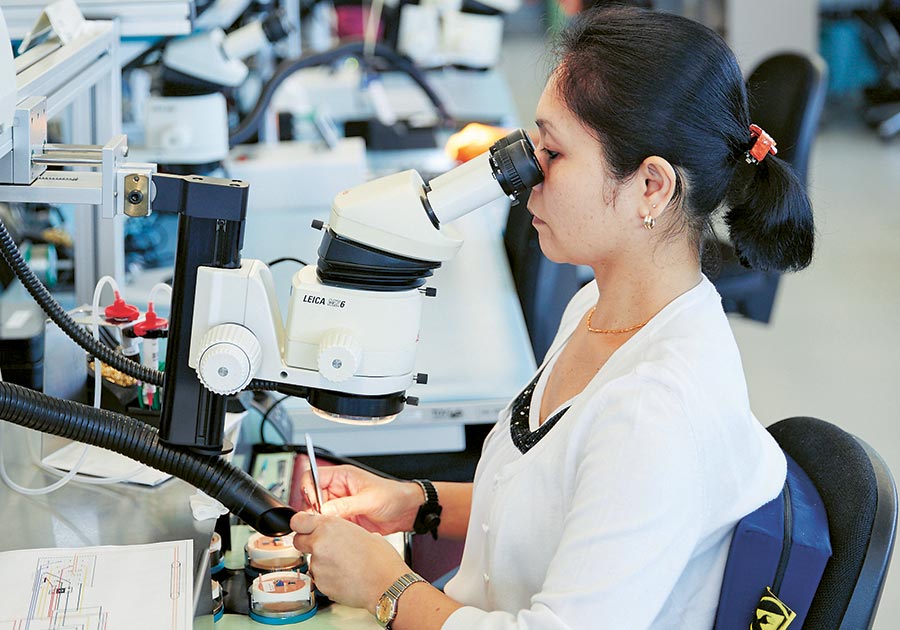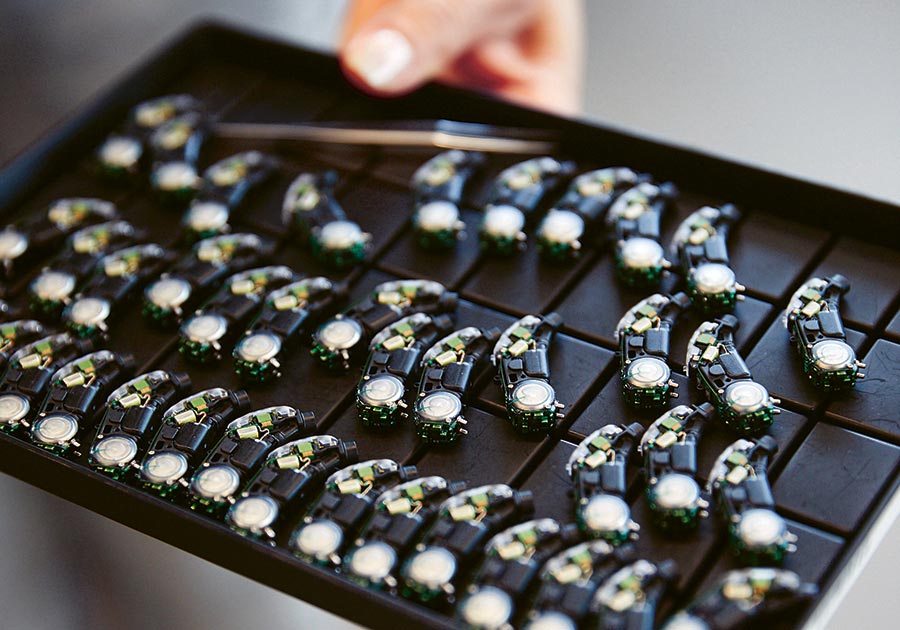How?
Hearing loss is a slow, creeping development. People who are losing their hearing will often kid themselves, ignoring or glossing over the fact that they can’t hear as well as before. This forces the brain to adapt to deteriorations in hearing ability, which in turn diminishes its processing capacity and makes it sluggish. The ear is a highly complex organ and hearing is the sense that requires by far the most brain activity.
Many people are reluctant to get a hearing aid – what have you done to try to change this?
This is a psychological consideration. Many people still think of a hearing aid as a kind of prosthesis. In Italy and France, they even call it an “audioprothese”, which carries a definite stigma, and we are working hard to break down these negative associations. This situation certainly explains why people with hearing loss wait for an average of seven years before seeking the help of an audiologist. Unfortunately, the link between the brain and the ear may already have suffered substantial damage during this period.
“We think it is only a matter of time before hearing aids are entirely socially acceptable.”
Isn’t it more for aesthetic reasons that people are disinclined to use hearing aids?
Design plays a huge role, of course – but today’s hearing aids are a very different kettle of fish from the clunky, flesh-coloured devices you used to have to cram behind your ear. We are now capable of manufacturing aids that are so small you can’t really see them, as they are placed directly in the ear canal. This is why we think it is only a matter of time before hearing aids are entirely socially acceptable – perhaps not necessarily the ones you have to wear day and night, but certainly the smaller, easy-to-use ones that serve to enhance a specific acoustic experience, such as attending a symphony concert or taking part in a large group conversation around a table.
Which of your company’s innovations do you find most exciting?
We have set a number of standards – in binaural hearing, for instance, which enables the left and right hearing aids to communicate in real time and thus imitate the ears’ stereo ability. Another example is “Lyric”, our “contact lens” for the ear: this is a hearing aid that is only the size of a grain of rice, and we were the first to bring it to market. Our latest achievement is a rechargeable hearing aid from Phonak – it uses lithium-ion batteries and a completely novel radio technology.
Where do you get your ideas for such innovations?
Interestingly, it is frequently not our company that comes up with the idea, but we are often the ones who realise its implications, and so we end up developing the actual product, bringing it to market and turning it into the industry standard. Rechargeable hearing aids existed before we brought ours onto the market, for example, but they weren’t as technically sophisticated and therefore didn’t enjoy the same commercial success as our products. We were the first to make that happen.
Through proverbial Swiss perseverance and precision? Or what is your guiding principle?
Maybe! It’s no coincidence that we are not that far from the Jura region, and our business has a lot in common with the watch industry. Besides precision, however, I value two things in particular: modesty and determination – and each has to be applied with dedication and care. I strive to live by this principle in both my private and my professional life. It matters to me that we keep our feet on the ground as a company. We owe this to the market we serve, as well; ultimately, our business provides support for human beings whose lives are anything but easy.
How is this reflected in Sonova’s vision?
We imagine a world in which there is a solution for every kind of hearing loss, and in which everyone can experience the joy of hearing. Whether they’re children or a little older, people who regain their hearing have a completely different sense of what is possible and enjoy access to new social opportunities. They feel they can participate fully in life again – and that is key.

